Embarking on a Sahara Desert tour in Morocco is an extraordinary experience that promises adventure, beauty, and a deep connection with nature. The vast golden sand dunes, ancient traditions, and vibrant culture make it an unforgettable journey. This ultimate guide will explore everything you need to know to plan your perfect Morocco desert tours. From choosing the best time to visit to selecting the correct itinerary, understanding the cultural etiquette, and capturing stunning photographs, we’ve got you covered.
Table of content
- Best Time to Visit the Sahara Desert
- Duration of the Morocco Desert Tour: Choosing the Right Itinerary
- Researching and Selecting a Tour Operator or Agency
- Accommodation Options: Desert Camps, Hotels, or Lodges
- Transportation: Private Tours, Shared tours, or Self-Driving
- Essential Packing List: Clothing, Gear, and Other Necessities
- Safety Tips for Sahara Desert Travel
- Cultural Etiquette and Respectful Behavior in the Sahara
- Activities and Experiences in Morocco Desert: Camel Trekking, Sandboarding, Quad Biking, etc.
- Exploring Oasis Towns, Gorges, Kasbahs, and Berber Villages
- Capturing Memories: Photography Tips for the Sahara Desert
- Food and Dining: Trying Local Cuisine in the Moroccan Desert
- Local Culture and Traditions: Morocco Sahara Desert Berber Heritage and Nomadic Life
- Understanding the Sahara Desert Ecosystem and Wildlife
- Weather Conditions and Climate in Morocco Sahara Desert
- Budgeting and Costs: Morocco Desert Tours Pricing and Expense Considerations
- Tips for Booking and Confirming Your Morocco Desert Tour
- Preparing for Extreme Temperatures and Desert Conditions
- Morocco Desert Itinerary Suggestions: Must-Visit Sites and Hidden Gems
- Managing Expectations: Unique Challenges and Rewards of Morocco Desert Travel
- Responsible Travel: Minimizing Environmental Impact
- Best Photography Spots in the Sahara Desert
- Sunset and Sunrise Experiences in the Desert
- Camel Trekking in the Moroccan Desert
- Common Myths and Misconceptions about the Sahara
- Dealing with Sandstorms and Extreme Weather Conditions
- Tips for Solo Travelers in the Sahara Desert
- Sustainable Tourism Initiatives in the Sahara Desert
- Emergency Contacts and Travel Insurance
- Reflecting on the Beauty and Serenity of Morocco Sahara Desert
- Conclusion
Best Time to Visit the Sahara Desert
When visiting the Sahara Desert in Morocco, timing is crucial. The best time to explore this magnificent desert is from September to May, when the weather is pleasant, with cooler temperatures during the day and chilly nights. Those with medical issues due to extreme heat should avoid the scorching summer months from June to early September. Planning your visit during the optimal months can ensure a more comfortable and enjoyable experience.
Duration of the Morocco Desert Tour: Choosing the Right Itinerary
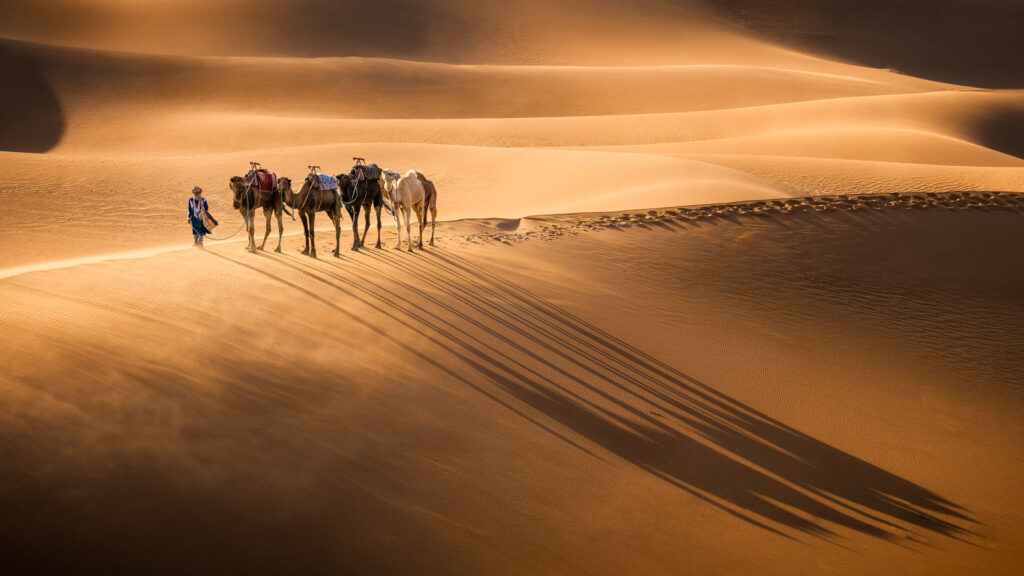
The duration of your Sahara desert tour depends on the time you have available and the experiences you wish to have. While a two-day Marrakech to Zagora desert tour can provide a taste of the desert’s beauty, a longer duration allows for a more immersive and comprehensive exploration. A three to four-day tour is often recommended to fully appreciate the tranquility and magnificence of the Sahara. This timeframe offers ample opportunity to engage in activities such as camel trekking, stargazing, and visiting local Berber villages.
Selecting a suitable itinerary is essential to make the most of your Sahara desert tour. Here are some popular routes that offer captivating landscapes and cultural experiences:
- Marrakech to Merzouga: This classic route takes you from the vibrant city of Marrakech through the breathtaking Atlas Mountains, lush oases, and eventually to the mesmerizing sand dunes of Merzouga. Along the way, you’ll have the chance to visit traditional Berber villages and immerse yourself in their rich culture. If you are on a budget, you can join a Shared 3 days tour from Marrakech to Merzouga.
- Fes to Merzouga: Starting from the historic city of Fes, this route leads you through the scenic Middle Atlas Mountains, picturesque cedar forests, and ultimately to the captivating Erg Chebbi dunes. Experience the warm hospitality of the local Berber communities and witness the stunning sunrise and sunset over the golden sands.
- Marrakech to Erg Chigaga: For those seeking a more off-the-beaten-path experience, this route takes you to the remote and secluded Erg Chigaga dunes. Here, you’ll find a sense of tranquility and serenity away from the crowds. Traverse vast desert landscapes, encounter nomadic communities, and revel in the solitude of this lesser-known desert destination.
- Casablanca to Merzouga: If you’re arriving in Morocco through Casablanca, this route allows you to combine the city’s allure with the magic of the Sahara. Journey through diverse landscapes, including the famous Todra Gorge, before reaching the captivating dunes of Merzouga. Immerse yourself in the nomadic culture, enjoy traditional cuisine, and marvel at the starry night sky.
- Marrakech to Fes via Merzouga: If you plan to visit the imperial cities of Marrakech and Fes, consider adding a desert tour to your itinerary. Spend a few nights in Dades Valley and Merzouga desert camp to enhance your experience. The Marrakech to Fes desert tour typically takes 3 to 4 days, depending on your schedule. if you are on a budget, we then recommend taking a shared Marrakech to Fes desert tour which lasts 3 days and keeps the same itinerary as the private tour.
Researching and Selecting a Tour Operator or Agency
Researching and selecting a reliable and licensed Moroccan tour operator or agency with a physical address is crucial to ensure a smooth and memorable Morocco Sahara desert tour. Look for operators with positive reviews, extensive experience, and a focus on responsible tourism practices. Consider factors such as their knowledge of the region, quality of services, and customer support. A reputable operator will provide professional guides, well-maintained vehicles, and comprehensive itineraries, enhancing your overall experience.
Accommodation Options: Desert Camps, Hotels, or Lodges
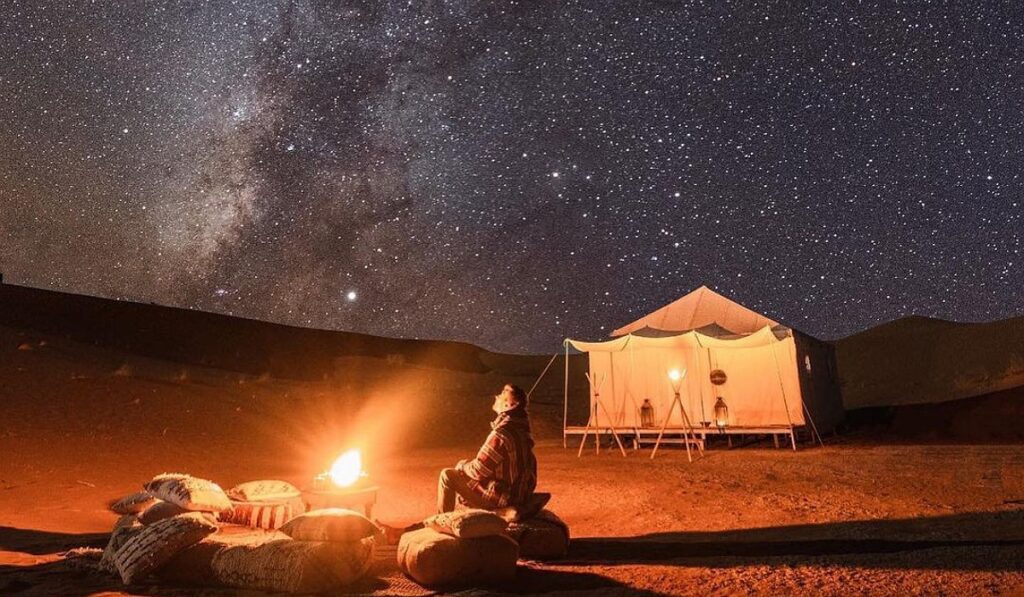
One of the highlights of a Sahara desert tour is the opportunity to stay amidst the enchanting dunes. Accommodation options range from traditional desert camps to hotels and lodges near the desert. For an authentic experience, opt for a night in a desert camp, where you can sleep under the stars and indulge in Berber hospitality. These camps offer comfortable tents, delicious meals, and traditional music around a campfire, creating an unforgettable ambiance.
Transportation: Private Tours, Shared tours, or Self-Driving
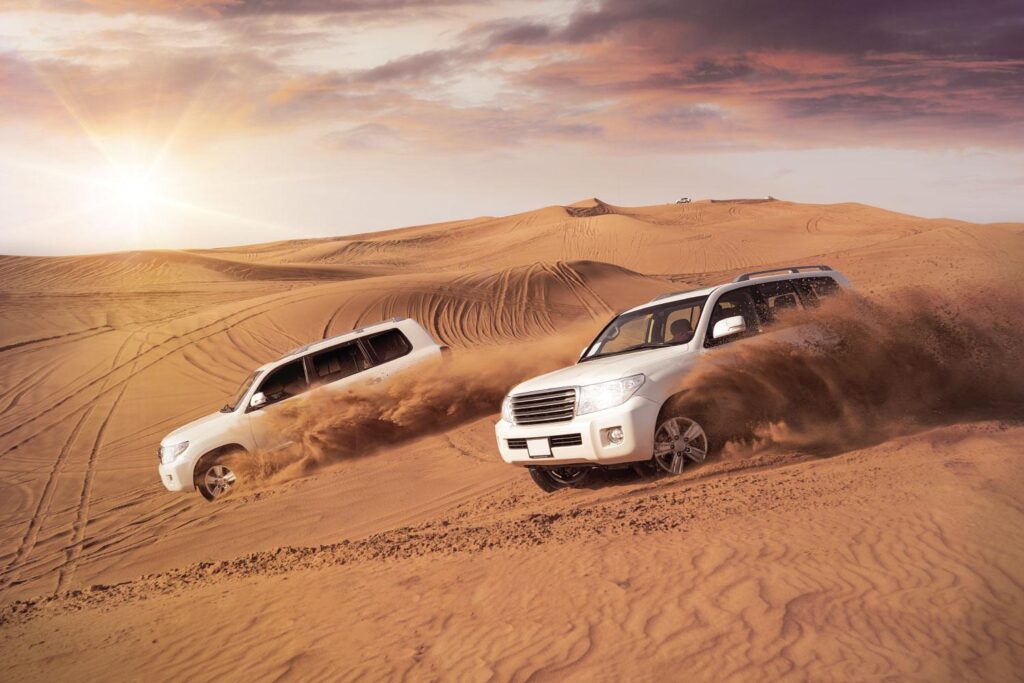
Choosing the proper mode of transportation for your Sahara desert tour depends on your preferences and budget. Private Morocco desert tours provide the convenience of personalized itineraries, flexibility, and privacy. Shared vans are a cost-effective option for those seeking to join one of the group Marrakech desert tours and meet fellow travelers. Self-driving allows for independence and exploration but requires careful planning and familiarity with driving in Morocco. Consider the pros and cons of each option to make an informed decision.
Essential Packing List: Clothing, Gear, and Other Necessities
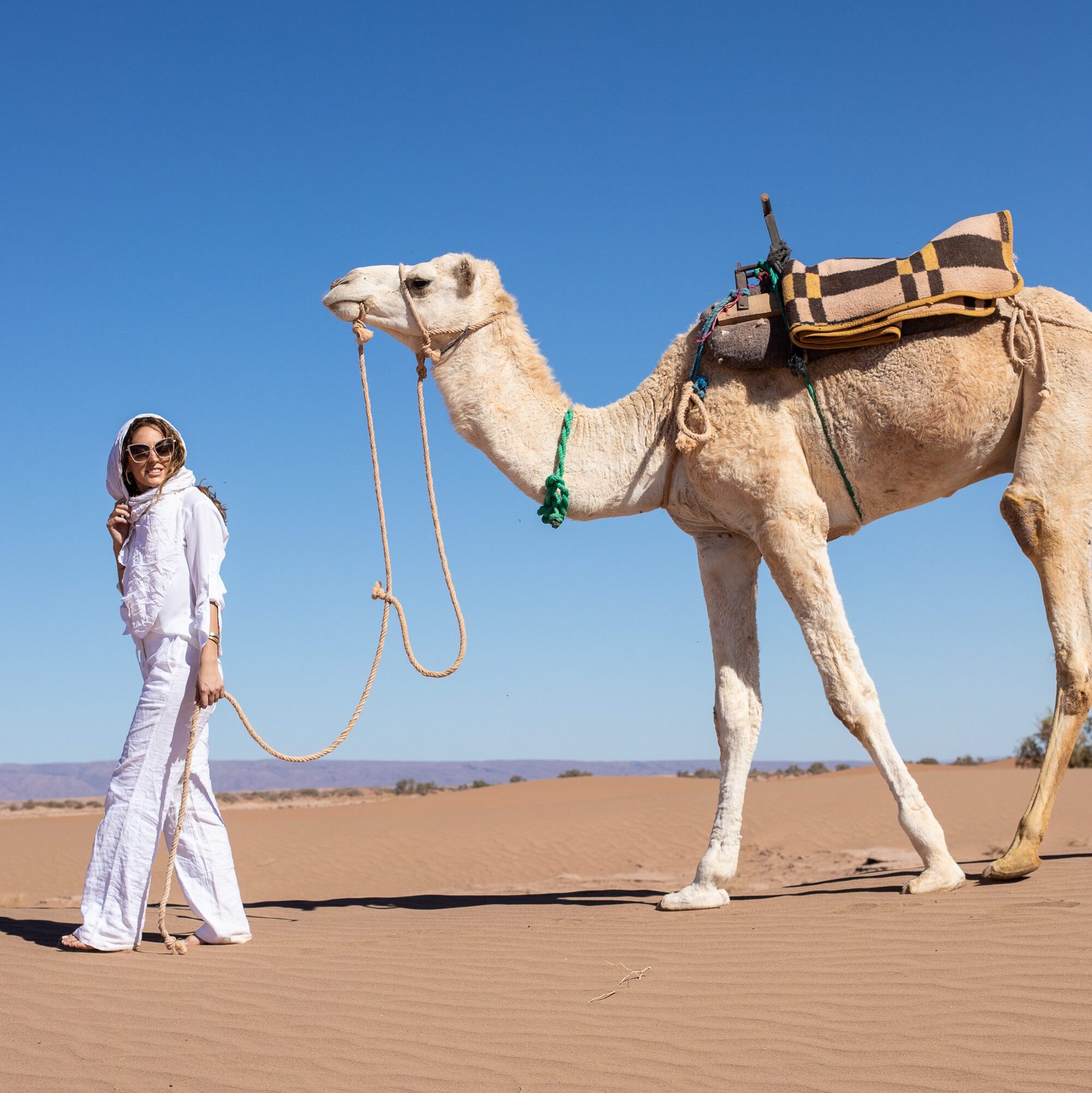
When packing for your Sahara desert tour, it is essential to pack appropriately to ensure comfort and safety in the desert environment. Here are some essential items to include in your packing list:
- Lightweight and breathable clothing to combat the heat during the day.
- Warm layers and a good-quality sleeping bag for chilly desert nights.
- Sun protection essentials such as hats, sunglasses, and sunscreen.
- Comfortable walking shoes or sandals for exploring the desert.
- A headlamp or flashlight for navigating in the dark.
- A scarf or shawl to protect your face from sandstorms.
- 7. Basic toiletries and a small first aid kit.
- 8. A camera or smartphone to capture stunning landscapes and memories.
To learn more about what to pack for your Morocco desert tour, click here.
Safety Tips for Sahara Desert Travel
While the Sahara Desert is a magical destination, it’s crucial to prioritize safety during your journey. Here are some essential safety tips:
- Stay hydrated by drinking plenty of water, especially in the desert’s dry climate.
- Follow the guidance of your guide and avoid venturing alone into unfamiliar areas.
- Protect yourself from the sun by wearing a hat, sunglasses, and sunscreen.
- Respect the wildlife and avoid approaching or touching any animals you encounter.
- Be mindful of the desert’s extreme temperatures and take necessary precautions to prevent heatstroke or hypothermia.
- 6. Carry a map or GPS device to avoid getting lost if you travel alone in the vast desert expanse ( Especially in the Erg Chigaga desert )
Cultural Etiquette and Respectful Behavior in the Sahara
As you embark on a Sahara desert tour, it’s important to remember the local culture and customs. Here are some cultural etiquette tips to ensure respectful behavior:
- Dress modestly, especially when visiting villages or interacting with locals.
- Seek permission before taking photographs of individuals or their property.
- Engage with the local community by learning a few basic Arabic or Berber phrases.
- Respect the environment by not littering and leaving no trace of your visit.
- Follow the instructions and guidelines provided by your guide regarding cultural practices and traditions.
Activities and Experiences in Morocco Desert: Camel Trekking, Sandboarding, Quad Biking, etc.
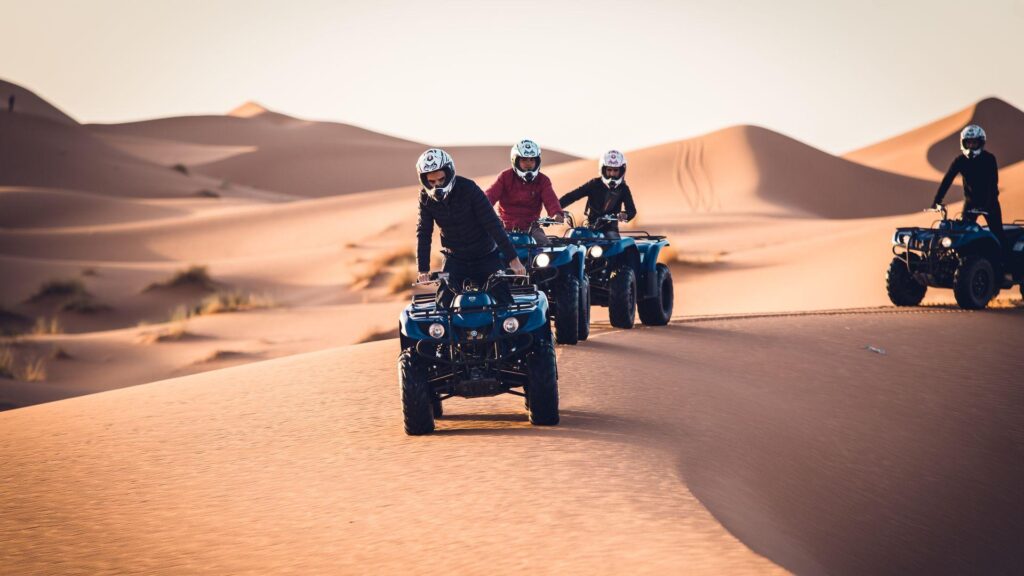
A Morocco desert tour offers many activities and experiences to make your journey unforgettable. Some popular activities include:
- Camel Trekking: Embark on a traditional Morocco camel ride and traverse the mesmerizing sand dunes.
- Sandboarding: Slide down the sandy slopes on a board for an adrenaline rush.
- Quad Biking: Explore the desert at high speed on an exhilarating quad biking adventure.
- Stargazing: Marvel at the breathtaking night sky and learn about constellations from expert guides.
- Traditional Moroccan Music and Dance: Immerse yourself in Berber culture with live music and dance performances around the campfire.
Discover our best things to do in Morocco Desert for more details about different cultural and adventure activities we offer on our tours.
Exploring Oasis Towns, Gorges, Kasbahs, and Berber Villages
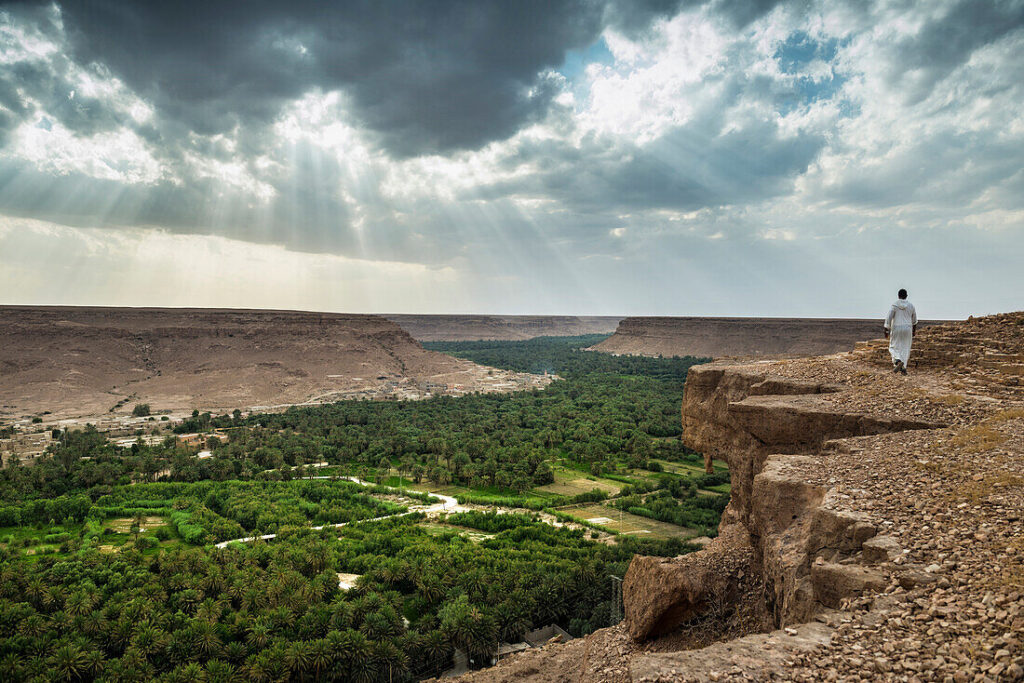
Beyond the Sahara’s vast expanse are captivating oasis towns, stunning gorges, ancient kasbahs, and traditional Berber villages waiting to be discovered. Explore the charming town of Ouarzazate, visit the dramatic Todra Gorge, and wander through the UNESCO World Heritage site of Kasbah Ait Ben Haddou. Engage with the locals, learn about their traditions, and witness the region’s rich history.
Capturing Memories: Photography Tips for the Sahara Desert
The Sahara Desert offers endless opportunities for capturing stunning photographs. Here are some tips to help you capture the beauty of the desert:
- Timing is crucial: Take advantage of the golden hour during sunrise and sunset for magical lighting conditions.
- Embrace the vastness: Use the expansive dunes as a backdrop to create a sense of scale and awe.
- Play with textures: Highlight the intricate patterns of the sand by capturing close-up shots.
- Include human elements: Incorporate camel riders or local nomads to add a sense of storytelling to your photos.
- Experiment with angles: Get creative with low-angle shots to emphasize the height of the dunes.
Food and Dining: Trying Local Cuisine in the Moroccan Desert
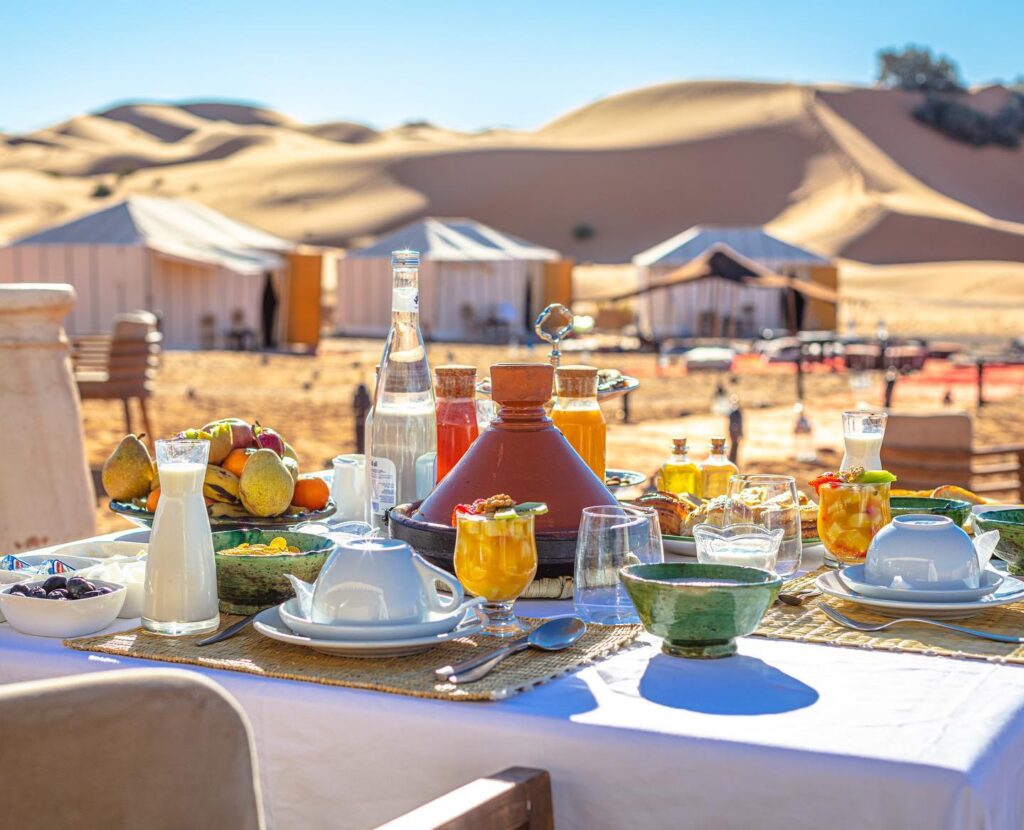
Exploring the Sahara is an opportunity to indulge in the flavors of Moroccan cuisine. Traditional Berber dishes, such as Tagines, couscous, and hearty stews, are often served during desert tours. Experience Moroccan spices’ authentic tastes and aromas, and savor the hospitality of desert camps and local road cafés. If you have dietary restrictions, inform Marrakech Desert Trips team in advance to accommodate your needs.
Local Culture and Traditions: Morocco Sahara Desert Berber Heritage and Nomadic Life
The Sahara Desert is home to the Berber people with a rich cultural heritage and a nomadic way of life. During your desert tour, you’ll have the chance to learn about their traditions, music, handicrafts, and learn about their ingenious underground irrigation system. Engage in conversations with the locals, walk inside mud-brick historical Kasbahs, visit nomadic camps, and witness their resilient connection to the desert. Embrace this unique opportunity to gain insights into a centuries-old way of life.
Understanding the Sahara Desert Ecosystem and Wildlife
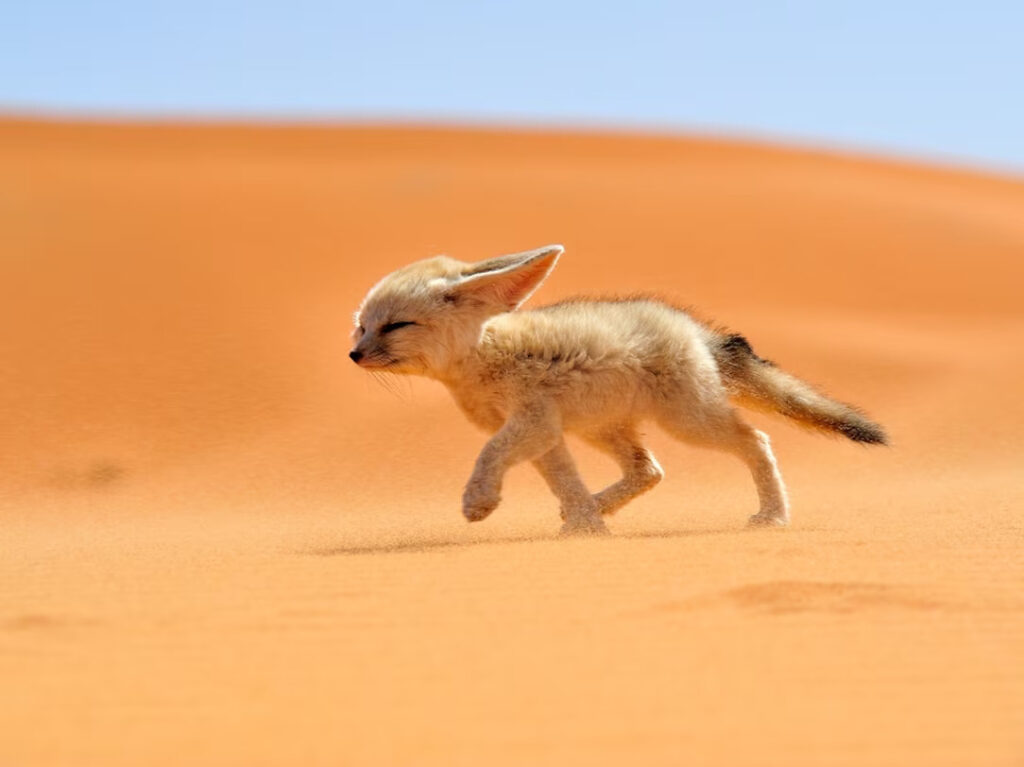
The Sahara Desert is not just a vast expanse of sand; it’s a fascinating ecosystem with unique wildlife and flora. From the resilient desert foxes and fennec foxes to the graceful gazelles and various reptile species, the desert harbors a surprising diversity of life. Learn about these remarkable creatures’ adaptations and survival strategies and gain a deeper appreciation for the delicate balance of the desert ecosystem.
Weather Conditions and Climate in Morocco Sahara Desert
Extreme temperature variations characterize the climate in the Sahara Desert. During the day, temperatures can reach scorching highs, while they can drop significantly at night. It’s essential to be prepared for these fluctuations and dress accordingly. Additionally, the desert experiences minimal rainfall, making it an arid environment. Stay informed about weather conditions and consult your tour operator for the latest updates.
Budgeting and Costs: Morocco Desert Tours Pricing and Expense Considerations
Budgeting for a Sahara desert tour in Morocco involves considering various factors such as the duration of the tour, accommodation choices, transportation options, and additional activities. Prices can vary depending on the level of comfort and customization you seek. Private tours and luxury camps are more expensive, while shared group desert tours and standard camps offer more budget-friendly options. Consider your priorities and allocate your budget to create the perfect balance of comfort and affordability.
Tips for Booking and Confirming Your Morocco Desert Tour
When booking your Morocco desert tour, it’s essential to communicate clearly with your tour operator to ensure a smooth experience. Here are some tips:
- Specify your preferences: Communicate your interests, preferred activities, and desired comfort level to the tour operator.
- Understand the itinerary: Review the tour itinerary and ensure it meets your expectations.
- Inquire about inclusions: Clarify what is included in the tour package, such as meals, accommodation, local guides, and activities, to avoid surprises.
- Confirm transportation arrangements: Discuss the mode of transportation and ensure it suits your preferences and needs.
Preparing for Extreme Temperatures and Desert Conditions
As you prepare for your Morocco Sahara desert tour, you must be aware of the extreme temperatures and challenging conditions you may encounter. Here are some tips to help you prepare:
- Dress in layers: Pack lightweight and breathable clothing for the daytime and warm layers for the chilly desert nights.
- Carry sufficient water: Hydration is vital in the desert, so ensure you have an adequate water supply during your journey. There will be convenience stores to buy water in every village along the way.
- Protect yourself from the sun: Wear a hat, sunglasses, and sunscreen to shield yourself from the intense desert sun, especially when you walk in Kasbah Ait Ben Haddou and Tinghir Oasis.
- Be mindful of your energy levels: Pace yourself and conserve energy during the day to avoid exhaustion.
- Pack essentials: Carry a small backpack with sunscreen, a hat, a scarf, personal medications, wet towels, and hand sanitizer.
Morocco Desert Itinerary Suggestions: Must-Visit Sites and Hidden Gems
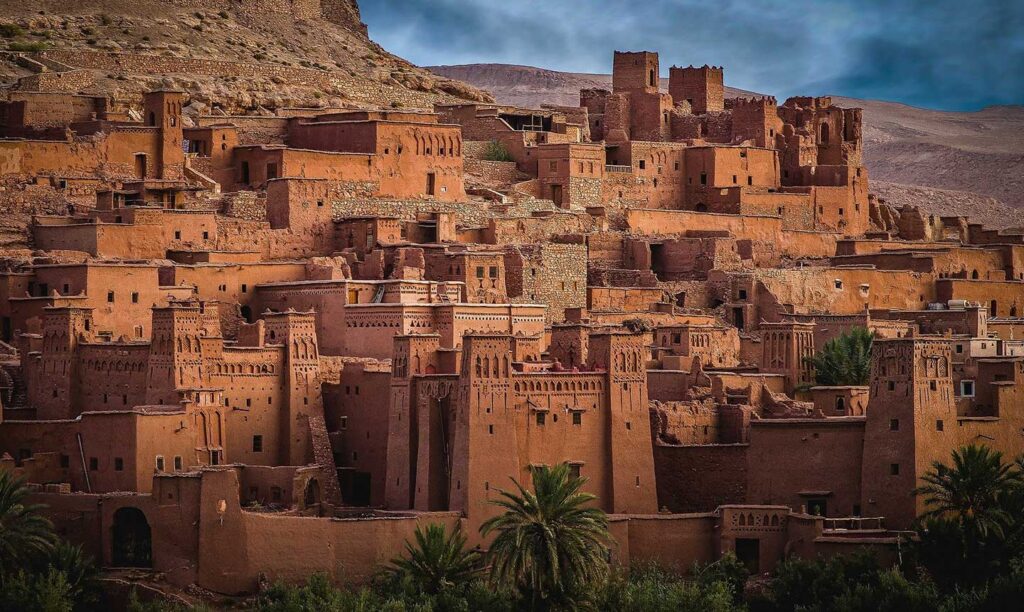
While planning your Morocco desert tour, consider including some must-visit sites and hidden gems. Here are a few recommendations:
- Ait Ben Haddou: Explore this UNESCO World Heritage site, known for its stunning kasbahs and architectural beauty.
- Todra Gorge: Marvel at the dramatic rock formations and enjoy scenic hikes in this breathtaking natural wonder.
- Erg Chebbi: Visit the majestic sand dunes of Erg Chebbi near Merzouga and experience the magic of the Sahara at sunrise or sunset.
- Zagora: Discover the lesser-known desert town of Zagora and enjoy its serene ambiance and Draa Valley palm grove.
- Skoura Oasis: Immerse yourself in the tranquil beauty of Skoura Oasis, a lush haven nestled in the palm-filled Draa Valley.
Managing Expectations: Unique Challenges and Rewards of Morocco Desert Travel
Traveling through the Sahara Desert is an adventure unlike any other, but managing your expectations is essential. Challenges like extreme temperatures, basic amenities, and limited connectivity may arise. However, the rewards of witnessing the vastness of the Moroccan desert, immersing in local culture, and experiencing the serenity of the dunes make it all worthwhile. Embrace the unique challenges as part of the journey and be open to the unexpected. Remember, if you opt for a group shared tour, accommodation is basic, itinerary flexibility is inexistent, and will be 17 participants per group.
Responsible Travel: Minimizing Environmental Impact
Being a responsible traveler and minimizing environmental impact is crucial when exploring the Moroccan Sahara Desert. Here are some ways you can contribute:
- Respect nature: Do not disturb or remove plants, rocks, or wildlife.
- Dispose of waste properly: Carry a small trash bag and ensure you leave no trace of your visit.
- Support local communities: Choose a Moroccan tour operator and accommodations that prioritize sustainable practices and contribute to the local economy.
Best Photography Spots in the Sahara Desert
The Moroccan Desert offers a variety of breathtaking photography opportunities. Here are some of the best spots to capture the beauty of the desert:
- Todgha Canyons: Venture into the dramatic Todgha Canyons and capture the sheer rock walls rising high above you. Play with angles to capture the sunlight filtering through the narrow gaps, creating a magical play of light and shadow.
- Dades Canyon snaky road: Drive along the winding road of Dades Canyon, capturing the panoramic views of rugged cliffs and deep gorges. The road’s twists and turns provide opportunities for capturing dynamic shots that highlight the scale and beauty of the canyon.
- Desert wildlife: Keep your camera ready to capture the elusive desert wildlife, such as the dromedaries (one-humped camels) that gracefully roam the dunes, or the agile desert foxes that blend into the sandy landscape.
- Desert villages: Visit the charming desert villages, such as Merzouga or M’hamid, and capture the traditional architecture, vibrant colors, and local way of life. Interact with the friendly locals, and with their permission, capture candid portraits reflecting the desert communities’ warmth and resilience.
- Night sky: Take advantage of the Sahara’s pristine dark skies and capture stunning nightscapes filled with countless stars. Experiment with long-exposure photography to capture the stars’ mesmerizing movement against the desert landscape’s backdrop.
- Sand dune patterns: Zoom in on the intricate patterns formed by wind-swept sand on the dunes. Capture the delicate ripples and textures, showcasing the fascinating details that make each dune unique.
- Sunrise and sunset: Witness the magical moments when the sun kisses the horizon, bathing the desert in warm, golden hues. Experiment with silhouettes, backlighting, and the interplay of colors to capture the enchanting beauty of these daily rituals in the desert.
- Desert reflections: If you’re lucky to encounter rare rainfall or find a natural water source, capture the stunning reflections of the surrounding landscape on the water’s surface.
These fleeting moments create extraordinary and ethereal scenes in the desert. Remember to respect the environment and local communities while photographing in the Sahara. Seek permission when photographing people, be mindful of fragile desert ecosystems, and leave no trace. The Moroccan Desert is a photographer’s paradise, offering endless opportunities to capture the timeless allure of this captivating landscape.
Sunset and Sunrise Experiences in the Desert
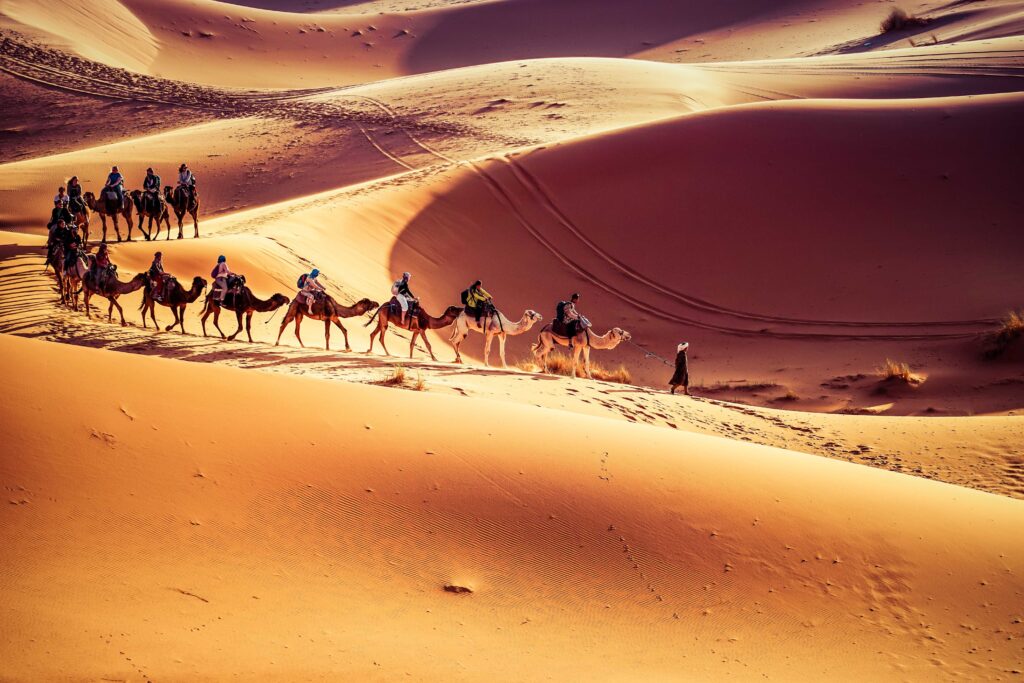
As the first rays of sunlight emerge on the horizon, the desert comes alive with a gentle glow. The shifting colors paint the landscape in shades of gold, orange, and pink, casting an ethereal light that illuminates the dunes and creates captivating patterns of shadows and highlights. The vast expanse of sand stretches as far as the eye can see, with the undulating shapes of the dunes creating a mesmerizing sight.
During sunrise, the desert slowly awakens. The soft morning light unveils the intricate details of the desert floor, revealing the delicate footprints left by nocturnal creatures and the subtle textures of the sand. As the sun continues its ascent, the desert gradually warms, breathing life into the surrounding environment.
In contrast, the sunset brings a sense of tranquility and reflection. As the day draws to a close, the temperature begins to cool, creating a soothing atmosphere. The sky transforms into a breathtaking tapestry of colors, with hues of purple, red, and gold cascading across the vast canvas above. The shifting light dances upon the sand, creating a spectacle that is both serene and awe-inspiring.
Sunset and sunrise in both Erg Chebbi or Erg Chigaga dunes offer a moment of introspection and connection with nature. It is a time to appreciate the beauty of simplicity and the grandeur of the natural world. The absence of city lights allows for unobstructed views of the celestial canopy above, revealing a canopy of stars that adorn the night sky.
Camel Trekking in the Moroccan Desert
Camel trekking is an iconic experience in the Sahara Desert, allowing you to traverse the golden sand dunes like a true nomad. While it may take some time to adjust to the rhythm of the camel’s gait, the experience is unparalleled. Listen to the soft footsteps of the camels, feel the gentle sway of the saddle, and take in the vastness of the desert as you journey through the timeless landscapes.
Common Myths and Misconceptions about the Sahara
Myths and misconceptions often surround the Sahara Desert. Let’s debunk some of the common ones:
- There’s no life in the Sahara: Contrary to popular belief, the Sahara is not devoid of life. While it may seem desolate at first glance, the desert is home to a surprising array of flora and fauna specially adapted to the harsh conditions. From resilient desert plants like acacias, cacti, and date palm trees to elusive desert-dwelling animals like fennec foxes, sand vipers, and scorpions, the Sahara boasts a unique ecosystem worth exploring.
- It’s impossible to navigate: While the vastness of the Sahara can be intimidating, skilled local guides and experienced desert nomads have been navigating its expansive landscapes for centuries. Their knowledge of the terrain allows them to safely lead travelers through the desert, ensuring a memorable and well-guided journey.
- It’s only accessible by camel: While camels have long been associated with desert travel, various means of transportation are available for exploring the Sahara. From 4×4 vehicles and quad bikes to trekking on foot, there are options to suit different preferences and travel styles.
- It’s devoid of cultural heritage: The Sahara has a rich cultural heritage shaped by the indigenous Berber people who have inhabited the region for centuries. From ancient trading routes and caravanserais to traditional nomadic lifestyles, the Sahara holds a wealth of cultural significance. Visitors can immerse themselves in local customs, music, dance, and cuisine, gaining a deeper understanding of the desert’s vibrant cultural tapestry.
- It’s only for adventurous travelers: While the Sahara does offer thrilling adventures, such as camel treks and dune bashing, it is also a destination for those seeking tranquility, relaxation, and a connection with nature. The breathtaking landscapes, starry night skies, and serene silence of the desert make it a haven for those seeking a peaceful retreat.
Dealing with Sandstorms and Extreme Weather Conditions
As with any desert, sandstorms can occur in the Sahara. While they are relatively rare, it’s essential to be prepared. Here are some tips:
- Listen to local advice: Pay attention to weather forecasts and follow the guidance of your tour guides or locals familiar with the area.
- Protect yourself: During a sandstorm, cover your face and eyes with a scarf or goggles to prevent sand particles from entering. Seek shelter until the sand storm subsides.
- When driving to the Sahara desert in Morocco, it’s essential to be aware of flash floods that can suddenly block the roads. It’s possible to become stranded between two flooded rivers without access to villages, hotels, or convenience stores.
- Before embarking on your journey during the rainy season or hot summer, check the weather forecast for potential hazards.
Tips for Solo Travelers in the Sahara Desert
Solo travel in the Sahara Desert can be a remarkable experience. Here are some tips to ensure a safe and enjoyable journey:
- Join a group tour: Consider joining a group tour to meet fellow travelers and have the support of experienced guides. Group tours also offer added safety and security.
- Inform others: Share your itinerary and your tour operator’s contact with friends or family back home, and check in with them regularly. Maintain communication with your tour operator and inform them of your solo travel status.
Sustainable Tourism Initiatives in the Sahara Desert
Sustainable tourism practices are crucial to preserve the beauty of the Sahara Desert for future generations. Several initiatives aim to minimize the environmental impact and support local communities. When planning your Sahara desert tour, consider the following:
- Eco-friendly accommodations: Choose accommodations prioritizing sustainable practices such as waste management, water conservation, and renewable energy.
- Responsible tourism: Respect the environment and local culture. Avoid littering, conserve water, and support local businesses and artisans.
Before embarking on your Morocco desert tour:
- Ensure you have the necessary emergency contacts and travel insurance.
- Save the contact information of your embassy or consulate, your tour operator, and the local emergency services.
- Purchase travel insurance covering medical emergencies, trip cancellations, and luggage loss.
Reflecting on the Beauty and Serenity of Morocco Sahara Desert
As your Morocco desert tour comes to an end, take a moment to reflect on the beauty and serenity you have experienced. The desert’s vastness, the people’s warmth, and the unforgettable memories created will stay with you long after you leave. Cherish the moments and allow the Sahara’s magic to inspire future adventures.
Conclusion
Planning your perfect Morocco Sahara desert tour requires careful consideration of factors such as the best time to visit Morocco, selecting the correct itinerary, researching tour operators, choosing accommodations, and understanding the local culture and wildlife. For visitors to Marrakech who may not have the time to venture into the vast Sahara on their short breaks, Agafay Desert offers a splendid opportunity to experience the allure of desert landscapes closer to the city. By following the tips and insights provided in this ultimate guide, you can ensure an unforgettable and fulfilling Morocco desert tour. Embrace the challenges, immerse yourself in the beauty, and let the magic of the desert captivate your soul. Safe travels!

